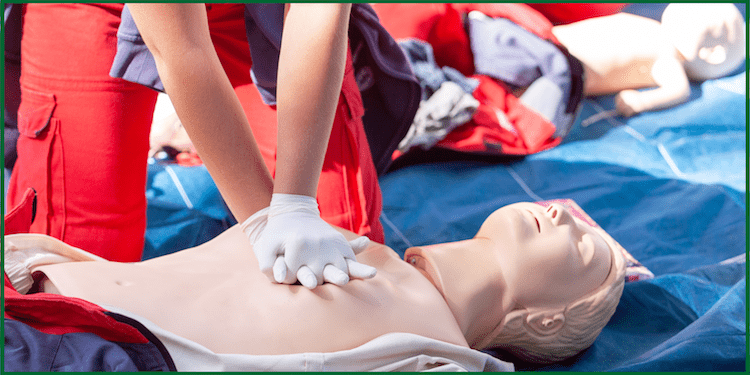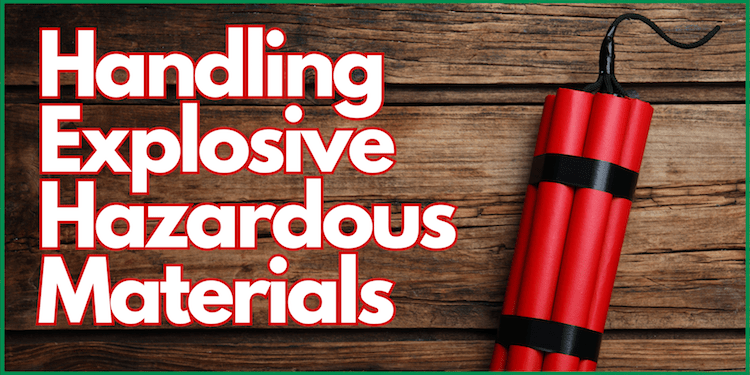Knowing how to administer first aid in an emergency can be an invaluable skill that can save lives. Being confident in your abilities is crucial to being fully prepared to handle any emergency.
Always remember to prioritize safety when providing first aid. In case of any uncertainty or discomfort in administering first aid, confidently call the emergency services directory for immediate assistance, such as dialing 911 in the United States.
This post aims to confidently guide how to administer first aid in various emergencies. It will cover the necessary steps to provide effective and practical assistance.
1. Bleeding:
Bleeding is one of the most common emergencies that require first aid. Confidently manage a bleeding emergency by following these steps:
Step 1: Call for Emergency Medical Services (EMS) if the bleeding is severe or if you are unsure about how to handle the situation.
Step 2: If performing first-aid, put on disposable gloves to reduce the risk of infection.
Step 3: Expose the wound and apply firm pressure with a gauze pad or clean fabric. If the bleeding is acute, raise the affected limb above the level of the heart to help slow down the bleeding.
Step 4: Secure the dressing with adhesive tape or a bandage.
Step 5: If the bleeding continues through the first dressing, don’t remove it. Instead, add a second dressing on top and continue to apply pressure.
Step 6: If possible, apply a cold compress to the wound to help reduce swelling and pain.
Step 7: Monitor the victim’s condition until medical help arrives.
2. Burns
Fire, hot liquids, or chemicals can cause burns. To confidently manage a burn, follow these steps.
Step 1: Remove the burning source: If heat sources initiated the burn, such as a stove or fire, remove the person from the heat source or extinguish the flames with a fire extinguisher.
Step 2: Cool the burn: Run cool (not cold) water over the burn for at least 10 minutes or until the pain subsides. Refrain from using ice or ice water, as this can increase the damage to the skin.
Step 3: Remove clothing and jewelry: If the wearable is not stuck to the skin, carefully remove it. If it is stuck to the skin, leave it in place and seek medical attention.
Step 4: Apply a sterile gauze bandage: Cover the burn with a clean, non-fluffy cloth or sterile gauze bandage or a clean, non-fluffy cloth. Avoid applying ointments or creams to the burn.
Step 5: Elevate the burned area: If possible, elevate the burned area above the level of the heart to reduce swelling.
Step 6: Seek medical attention: If the burn is severe (larger than 3 inches in diameter, on the face, hands, feet, or genitals, or if it is a chemical or electrical burn), seek medical attention immediately.
3. Choking
Choking is a severe emergency that requires immediate attention. To confidently handle this situation, follow these steps:
Step 1: Determine the severity of the choking: If the person is coughing, encourage them to keep coughing, as this can help dislodge the object. If the person cannot cough, speak, or breathe, it is a complete blockage and requires immediate action.
Step 2: Call for emergency services: If you are alone with the person and they are experiencing a complete blockage, call for emergency services immediately.
Step 3: Perform the Heimlich maneuver: Begin by standing behind the affected person, wrapping your arms around their waist. Create a fist with one hand and place it just above their navel. Grasp your fist with your other hand and give a quick upward thrust. Repeat the procedure until the object dislodged or the person becomes unconscious.
Step 4: Perform CPR: If the person becomes unconscious, begin CPR immediately. Tilt their head back and perform two rescue breaths, then start chest compressions. Continue CPR until emergency services arrive on the scene or the person begins breathing on their own.
Step 5: Stay with the person: Even if the object is dislodged, the person may still require medical attention. Stay with them until emergency services arrive and follow any instructions they provide.
4. Head Injury
If someone has a head injury, keeping them still and minimizing movement is crucial. To confidently manage the situation, follow these procedures:
Step 1: Call for Emergency Medical Services (EMS) immediately if there is any sign of a severe head injury, such as unconsciousness, seizures, or severe bleeding.
Step 2: Keep the person still and calm. Only move them if it is absolutely necessary.
Step 3: Control bleeding by applying firm pressure onto the wound with a clean cloth or gauze pad. If the bleeding does not stop or the wound is deep, do not remove any objects stuck in the head. Instead, secure the dressing in place with adhesive tape or a bandage.
Step 4: If the person is conscious, ask them to describe what happened and any symptoms they are experiencing, such as dizziness, nausea, or headache.
Step 5: If the person is vomiting, turn them onto their side to prevent choking.
Step 6: Monitor the person’s condition until medical help arrives.
5. Seizures
Seizures can be daunting, but remaining confident and keeping the person safe is crucial. To confidently handle the situation, follow these steps:
Step 1: Stay calm and make sure the person is safe. Move out any nearby objects that could cause injury, such as furniture or sharp objects. Place a soft object, such as a cushion, under the person’s head to prevent further injury.
Step 2: Do not restrain the person by pinning them down or trying to stop their movements. Interference in the person’s motion can cause injury to both the person having the seizure and you.
Step 3: Time the seizure to help medical professionals determine the best course of treatment.
Step 4: Protect the person’s airway: If the person is foaming at the mouth or vomiting, turn them on their side to prevent choking. Please do not put anything in their mouth that can cause injury.
Step 5: Stay with the person: Talk to them calmly and reassure them they are safe. After the seizure, the person may be confused or disoriented.
Step 6: Seek medical attention: If the person has a seizure lasting longer than five minutes, has multiple seizures, or is injured during the seizure, call emergency services immediately.
6. Heart Attack
A heart attack is a life-threatening health emergency that requires immediate attention. It is essential to recognize the symptoms of a heart attack.
If someone experiences one or more of the following symptoms, they may be having a heart attack:
- Chest pain, pressure, tightness, squeezing, or aching sensation in the center of the chest.
- Sweating
- Lightheadedness, dizziness, or fainting.
- Shortness of breath.
- Nausea, indigestion, heartburn, or abdominal pain.
- Pain and discomfort that spreads to the arm, back, shoulder, neck, jaw, teeth, or, occasionally, the upper abdomen.
Step 1: Call for emergency medical services right away. Time is critical in a heart attack, and prompt medical attention can make a difference.
Step 2: Help the person sit or lie down in a comfortable position. Loosen tight clothing, such as a belt and tie, to help them breathe easier.
Step 3: If a heart attack medication is prescribed to the person, help them take it as directed.
Step 4: If the person is unconscious, not breathing, or has no pulse, begin CPR (cardiopulmonary resuscitation) immediately.
Step 5: If an automated external defibrillator (AED) is available and the person is not breathing, follow the instructions to deliver a shock to the heart.
Step 6: Stay with the person and monitor their condition until medical help arrives.
Remember, the most important thing you can do in a heart attack emergency is call for medical help immediately.
Bottomline
To administer first aid confidently during an emergency, having the necessary knowledge and trust in your ability to perform under pressure is vital.
The first step is to assess the situation with calmness. Seeking immediate medical attention is crucial, and you must feel free to call emergency services, such as dialing 911 in the United States.
By being fully prepared and knowledgeable, you can confidently help others in their time of need, knowing you have the skills and expertise to make a difference.
Do you enjoy this reading? Kindly share with family, friends, and colleagues. Thanks! 🙂



